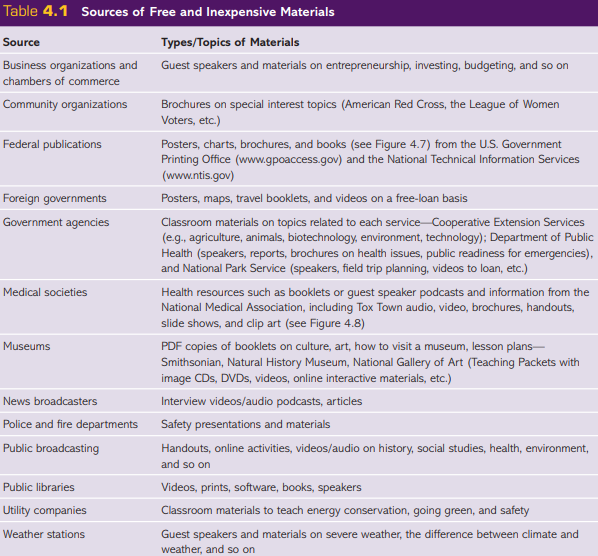Meeting 4: Free and inexpensive materials
Free and inexpensive materials include all types of
media. Commonly available items include posters, games,
pamphlets, brochures, reports, charts, maps, books, CDs,
audio, video, multimedia kits, and real objects. The more
costly items are usually sent only on a free-loan basis and
must be returned to the supplier after use. In some instances,
single copies of computer software, audio, and video fi les,
or DVDs will be donated to your school media center to be
shared among many users.
advantages:
- Up to date. Free and inexpensive materials from online
resources can provide current information not found in
textbooks or other media
- In-depth treatment. Subject-specific materials typically provide in-depth information on a topic (travel brochures).
- Variety of uses. Students can access open source applications outside of school. Audiovisual materials can be used for self-study or for presentation to the class. Posters, charts, and maps can be combined to create topical displays.
- Student manipulation. Materials that are expendable have the extra advantage of allowing learners to
get actively involved with them. They can also scan
printed information and visuals to import into digital
products

Last modified: Thursday, 29 September 2022, 7:14 PM